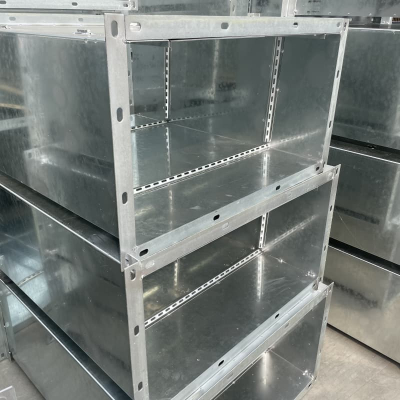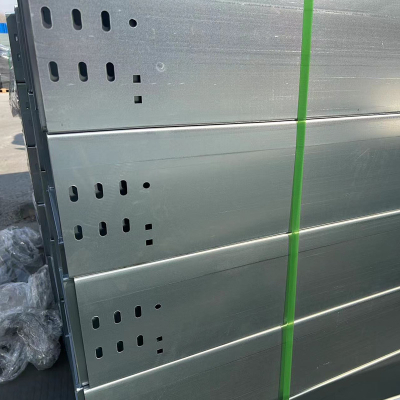How do I choose a cable tray?
Cable trays are essential components in modern infrastructure, enabling organized routing, support, and protection of power, data, and communication cables. Choosing the right cable tray involves understanding material options, load requirements, environmental conditions, applicable codes, and safety factors. This article offers a technically grounded, SEO-optimized, and standards-compliant guide to selecting the best cable tray for industrial, commercial, and infrastructure projects.
Why Cable Tray Selection Matters
Selecting the wrong cable tray system can result in:
Premature failure due to corrosion or overloading
Non-compliance with safety codes
Increased installation or maintenance costs
Fire hazards or signal interference
Hence, a systematic selection process is critical for safety, longevity, and regulatory compliance.
1. Determine Cable Type and Volume
Key Points:
Calculate total cable diameter and weight.
Consider future expansion (typically 25% extra space).
Classify cables: power, data, fiber optics, and mixed-use.
Example:
A data center running 50 CAT6 cables (7 mm each) requires a minimum 150 mm tray width with sufficient airflow to prevent overheating.
2. Understand Load Requirements
Types of Load:
Static Load: Weight of the cables and tray system.
Dynamic Load: Any movement or vibration (e.g., seismic zones).
Environmental Load: Snow, wind, and chemical exposure in outdoor or industrial settings.
Engineering Standard:
Refer to NEMA VE 1 and IEC 61537 for tray strength classifications and loading capacities. Always apply a safety factor of 1.5–2.0 for static loads.
3. Choose the Right Tray Type
| Tray Type | Use Case | Strength |
|---|---|---|
| Ladder Tray | Heavy industrial cables, high ventilation | High |
| Solid Bottom Tray | EMI protection, fiber optics | Medium |
| Perforated Tray | Moderate ventilation, lower EMI shielding | Moderate |
| Wire Mesh/Basket Tray | Data cables, commercial buildings | Light |
| Channel Tray | Short runs with few cables | Light |
Ladder trays offer better heat dissipation, making them ideal for high-voltage power installations.
4. Select Material Based on Environment
Common Materials:
Aluminum: Lightweight, corrosion-resistant, excellent for indoor/outdoor use.
Galvanized Steel (pre-/hot-dip): Cost-effective, medium corrosion resistance.
Stainless Steel (304/316): High corrosion and chemical resistance.
FRP (Fiberglass Reinforced Plastic): Ideal for corrosive, non-conductive applications.
Industry Standards:
ASTM B221 for aluminum alloys
ASTM A653 for galvanized steel
NEMA FG 1 for fiberglass trays
Example:
Wastewater treatment facilities often use FRP trays due to high chemical exposure.
5. Evaluate Installation and Maintenance Constraints
Checklist:
Ceiling height and mounting space
Accessibility for future maintenance
Compatibility with existing support infrastructure (struts, hangers, brackets)
Regulations:
Follow NEC (National Electrical Code) Article 392 for installation clearance, grounding, and fire safety.
In Europe, refer to IEC 60364 and local building codes.
6. Grounding and EMI Considerations
Metallic trays must be electrically bonded and grounded. For sensitive data or signal cables, consider trays with:
Isolated compartments
Non-conductive coatings
Shielded cable pathways
Standard Compliance:
NEC 392.7 for bonding requirements
IEEE 1100 (Emerald Book) for grounding practices
7. Fire Resistance and Safety Codes
Fire Performance:
Use fire-retardant materials in tunnels or public buildings.
Maintain fire barriers in accordance with NFPA 70 and IEC 60332.
Example:
For transit tunnels, install fire-rated cable trays and ensure penetration seals meet ASTM E814 standards.
Frequently Asked Questions (FAQ)
Q1: How wide should my cable tray be?
A: Total cable width plus 25–30% spare capacity is a good baseline. Use fill ratio calculators or NEMA load tables.
Q2: What is the maximum cable load a tray can support?
A: Refer to manufacturer data or NEMA VE 1 tables. For example, a 12-inch aluminum ladder tray may support ~75 kg/m with proper support spacing.
Q3: Can I mix power and data cables in one tray?
A: Yes, but separation barriers are required to reduce EMI per NEC Article 392.8.
Q4: How far apart should tray supports be?
A: Typically every 1.5 to 3 meters, depending on load class and tray material.
Conclusion: Make an Informed Choice
Choosing the right cable tray requires a clear understanding of engineering principles, environmental conditions, load types, and regulatory frameworks. Material selection, tray design, and compliance with industry standards directly impact system performance and safety.
Professional Recommendation
We recommend conducting a detailed cable layout analysis, consulting structural engineers when necessary, and verifying all decisions against regional and international codes (NEC, IEC, NEMA, ASTM).
Call to Action
If you're planning an electrical infrastructure project or require expert consultation on industrial cable tray systems, contact our technical team for guidance on tray selection, load calculations, and installation support. Let us help ensure your system is safe, efficient, and compliant from the ground up.



